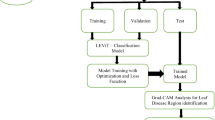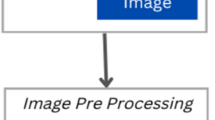Abstract
Deep learning-based plant disease detection has seen promising advancements, particularly in its remarkable ability to identify diseases through digital images. Nevertheless, these systems’ opacity and lack of transparency, which often offer no human-interpretable explanations for their predictions, raise concerns with respect to their robustness and reliability. While many methods have attempted post-hoc model explainability, few have specifically targeted the integration and impact of domain knowledge. In this study, we propose a novel framework that combines a tomato disease ontology with the concept explainability method Testing with Concept Activation Vectors (TCAV). Unlike the original TCAV method, which required users to gather diverse image concepts manually, our approach automates the creation of images based on relevant concepts used by domain experts in plant disease identification. This not only simplifies the concept collection and labelling process but also reduces the burden on users with limited domain knowledge, ultimately mitigating potential biases in concept selection. Besides automating the concept image generation for the TCAV method, our framework gives insights into the significance of disease-related concepts identified through the ontology in the deep learning model decision-making process. Consequently, our approach enhances the efficiency and interpretability of the model’s diagnostic capabilities, promising a more trustworthy and reliable disease detection model.
Access this chapter
Tax calculation will be finalised at checkout
Purchases are for personal use only
Similar content being viewed by others
References
Plantvillage. www.plantvillage.psu.edu. Accessed 13 Nov 2023
Ahmad, A., Saraswat, D., El Gamal, A.: A survey on using deep learning techniques for plant disease diagnosis and recommendations for development of appropriate tools. Smart Agric. Technol. 3, 100083 (2023)
Amara, J., Bouaziz, B., Algergawy, A.: A deep learning-based approach for banana leaf diseases classification. Datenbanksysteme für Business, Technologie und Web (BTW 2017)-Workshopband (2017)
Amara, J., König-Ries, B., Samuel, S.: Concept explainability for plant diseases classification. In: Proceedings of the 18th International Joint Conference on Computer Vision, Imaging and Computer Graphics Theory and Applications (VISIGRAPP 2023) - Volume 4: VISAPP, pp. 246–253 (2023)
Ammar, H.: Ontology for plant protection. https://sites.google.com/site/ppontology/home (2009)
Blancard, D.: Tomato Diseases: Identification, Biology and Control: A Colour Handbook. CRC Press, Boca Raton (2012)
Bourguin, G., Lewandowski, A., Bouneffa, M., Ahmad, A.: Towards ontologically explainable classifiers. In: Farkaš, I., Masulli, P., Otte, S., Wermter, S. (eds.) ICANN 2021. LNCS, vol. 12892, pp. 472–484. Springer, Cham (2021). https://doi.org/10.1007/978-3-030-86340-1_38
Chhetri, T.R., Hohenegger, A., Fensel, A., Kasali, M.A., Adekunle, A.A.: Towards improving prediction accuracy and user-level explainability using deep learning and knowledge graphs: a study on cassava disease. Expert Syst. Appl. 233, 120955 (2023)
Chollet, F.: Deep learning with Python. Simon and Schuster (2021)
Davis, J., Goadrich, M.: The relationship between precision-recall and ROC curves. In: Proceedings of the 23rd International Conference on Machine Learning, pp. 233–240 (2006)
Deng, J., Dong, W., Socher, R., Li, L.J., Li, K., Fei-Fei, L.: ImageNet: a large-scale hierarchical image database. In: 2009 IEEE Conference on Computer Vision and Pattern Recognition, pp. 248–255. IEEE (2009)
Donadello, I., Dragoni, M.: SeXAI: introducing concepts into black boxes for explainable artificial intelligence. In: Proceedings of the Italian Workshop on Explainable Artificial Intelligence co-located with 19th International Conference of the Italian Association for Artificial Intelligence, XAI. it@ AIxIA 2020, Online Event, 25–26 November 2020, vol. 2742, pp. 41–54. CEUR-WS (2020)
Ge, Y., Xiao, Y., Xu, Z., Wang, X., Itti, L.: Contributions of shape, texture, and color in visual recognition. In: Avidan, S., Brostow, G., Cissé, M., Farinella, G.M., Hassner, T. (eds.) ECCV 2022. LNCS, vol. 13672, pp. 369–386. Springer, Cham (2022). https://doi.org/10.1007/978-3-031-19775-8_22
Ghorbani, A., Wexler, J., Zou, J.Y., Kim, B.: Towards automatic concept-based explanations. In: Advances in Neural Information Processing Systems, vol. 32 (2019)
Gkoutos, G.V., Green, E.C., Mallon, A.M., Hancock, J.M., Davidson, D.: Using ontologies to describe mouse phenotypes. Genome Biol. 6, 1–10 (2005)
Hughes, D., et al.: An open access repository of images on plant health to enable the development of mobile disease diagnostics. arXiv preprint arXiv:1511.08060 (2015)
Jaiswal, P., et al.: Planteome: a resource for common reference ontologies and applications for plant biology (2017)
Jearanaiwongkul, W., Anutariya, C., Andres, F.: An ontology-based approach to plant disease identification system. In: Proceedings of the 10th International Conference on Advances in Information Technology, pp. 1–8 (2018)
Jearanaiwongkul, W., Anutariya, C., Racharak, T., Andres, F.: An ontology-based expert system for rice disease identification and control recommendation. Appl. Sci. 11(21), 10450 (2021)
Kim, B., et al.: Interpretability beyond feature attribution: quantitative testing with concept activation vectors (TCAV). In: International Conference on Machine Learning, pp. 2668–2677. PMLR (2018)
Koch, G.G.: One-sided and two-sided tests and \(\rho \) values. J. Biopharm. Stat. 1(1), 161–170 (1991)
Molnar, C.: Interpretable machine learning. Lulu.com (2020)
Noy, N.F., et al.: Ontology development 101: a guide to creating your first ontology (2001)
Pease, A., Niles, I., Li, J.: The suggested upper merged ontology: a large ontology for the semantic web and its applications. In: Working Notes of the AAAI-2002 Workshop on Ontologies and the Semantic Web, vol. 28, pp. 7–10 (2002)
Sarker, M.K., Xie, N., Doran, D., Raymer, M., Hitzler, P.: Explaining trained neural networks with semantic web technologies: first steps. arXiv preprint arXiv:1710.04324 (2017)
Simonyan, K., Vedaldi, A., Zisserman, A.: Deep inside convolutional networks: visualising image classification models and saliency maps. arXiv preprint arXiv:1312.6034 (2013)
Smilkov, D., Thorat, N., Kim, B., Viégas, F., Wattenberg, M.: SmoothGrad: removing noise by adding noise. arXiv preprint arXiv:1706.03825 (2017)
de Sousa Ribeiro, M., Leite, J.: Aligning artificial neural networks and ontologies towards explainable AI. In: Proceedings of the AAAI Conference on Artificial Intelligence, vol. 35, pp. 4932–4940 (2021)
Szegedy, C., Vanhoucke, V., Ioffe, S., Shlens, J., Wojna, Z.: Rethinking the inception architecture for computer vision. In: Proceedings of the IEEE Conference on Computer Vision and Pattern Recognition, pp. 2818–2826 (2016)
Tjoa, E., Khok, H.J., Chouhan, T., Guan, C.: Enhancing the confidence of deep learning classifiers via interpretable saliency maps. Neurocomputing 562, 126825 (2023)
Van Dijk, M., Morley, T., Rau, M.L., Saghai, Y.: A meta-analysis of projected global food demand and population at risk of hunger for the period 2010–2050. Nat. Food 2(7), 494–501 (2021)
Wakchaure, M., Patle, B., Mahindrakar, A.: Application of AI techniques and robotics in agriculture: a review. Artif. Intell. Life Sci. 100057 (2023)
Zeiler, M.D., Fergus, R.: Visualizing and understanding convolutional networks. In: Fleet, D., Pajdla, T., Schiele, B., Tuytelaars, T. (eds.) ECCV 2014. LNCS, vol. 8689, pp. 818–833. Springer, Cham (2014). https://doi.org/10.1007/978-3-319-10590-1_53
Zhou, B., Sun, Y., Bau, D., Torralba, A.: Interpretable basis decomposition for visual explanation. In: Proceedings of the European Conference on Computer Vision (ECCV), pp. 119–134 (2018)
Acknowledgement
Supported by the Carl Zeiss Foundation (project ‘A Virtual Werkstatt for Digitization in the Sciences (K3)’ within the scope of the programline ‘Breakthroughs: Exploring Intelligent Systems for Digitization - explore the basics, use applications’).
Author information
Authors and Affiliations
Corresponding author
Editor information
Editors and Affiliations
Rights and permissions
Copyright information
© 2024 The Author(s), under exclusive license to Springer Nature Switzerland AG
About this paper
Cite this paper
Amara, J., Samuel, S., König-Ries, B. (2024). Integrating Domain Knowledge for Enhanced Concept Model Explainability in Plant Disease Classification. In: Meroño Peñuela, A., et al. The Semantic Web. ESWC 2024. Lecture Notes in Computer Science, vol 14664. Springer, Cham. https://doi.org/10.1007/978-3-031-60626-7_16
Download citation
DOI: https://doi.org/10.1007/978-3-031-60626-7_16
Published:
Publisher Name: Springer, Cham
Print ISBN: 978-3-031-60625-0
Online ISBN: 978-3-031-60626-7
eBook Packages: Computer ScienceComputer Science (R0)




